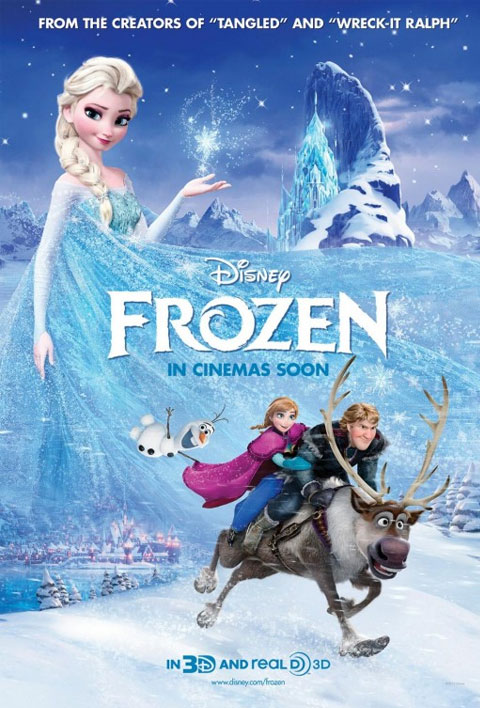Frozen
Storyform for the Dramatica Users Group Version
Taken as a whole, the story of Frozen is dysfunctional. A weak Overall Story Throughline, coupled with the lack of any real Consequences or well-encoded Influence Character Resolve, creates a narrative that simply doesn't hold up. Catchy songs and sisterhood take responsibility for the success of this film. Because of these inconsistencies in story, two potential candidates for storyforms exist: the Dramatica Users Group version and the Jim Hull/Narrative First version. The reasoning and thinking behind the DUG version can be found in the podcast and videocast available on this site. You can also read the reasoning behind Jim Hull's analysis of Frozen on his site. Take me to the Jim Hull/Narrative First version.
Story Dynamics
8 of the 12 essential questions
Main Character Resolve: Steadfast
Main Character Growth: Stop
Main Character Approach: Do-er
Main Character Mental Sex: Male
Story Driver: Action
Story Limit: Optionlock
Story Outcome: Success
Story Judgment: Good
Overall Story Throughline
Everything is Frozen
Overall Story Throughline: Universe
Overall Story Concern: Future
Overall Story Issue: Choice vs. Delay
Overall Story Problem: Temptation
Overall Story Solution: Conscience
Overall Story Symptom: Feeling
Overall Story Response: Logic
Overall Story Catalyst: Delay
Overall Story Inhibitor: Approach
Overall Story Benchmark: Past
Overall Story Signpost 1: Past
Overall Story Signpost 2: Progress
Overall Story Signpost 3: Future
Overall Story Signpost 4: Present
Main Character Throughline
Anna
Main Character Throughline: Physics
Main Character Concern: Obtaining
Main Character Issue: Approach vs. Attitude
Main Character Problem: Reconsider
Main Character Solution: Consider
Main Character Symptom: Feeling
Main Character Response: Logic
Main Character Unique Ability: Self-Interest
Main Character Critical Flaw: Openness
Main Character Benchmark: Understanding
Main Character Signpost 1: Learning
Main Character Signpost 2: Doing
Main Character Signpost 3: Understanding
Main Character Signpost 4: Obtaining
Influence Character Throughline
Elsa
Influence Character Throughline: Psychology
Influence Character Concern: Becoming
Influence Character Issue: Rationalization vs. Obligation
Influence Character Problem: Temptation
Influence Character Solution: Conscience
Influence Character Symptom: Uncontrolled
Influence Character Response: Control
Influence Character Unique Ability: Commitment
Influence Character Critical Flaw: Closure
Influence Character Benchmark: Conceptualizing
Influence Character Signpost 1: Conceiving
Influence Character Signpost 2: Conceptualizing
Influence Character Signpost 3: Being
Influence Character Signpost 4: Becoming
Relationship Story Throughline
Sisters
Relationship Story Throughline: Mind
Relationship Story Concern: Subconscious
Relationship Story Issue: Dream vs. Hope
Relationship Story Problem: Uncontrolled
Relationship Story Solution: Control
Relationship Story Symptom: Feeling
Relationship Story Response: Logic
Relationship Story Catalyst: Hope
Relationship Story Inhibitor: Rationalization
Relationship Story Benchmark: Memory
Relationship Story Signpost 1: Preconscious
Relationship Story Signpost 2: Conscious
Relationship Story Signpost 3: Memory
Relationship Story Signpost 4: Subconscious
Addditional Story Points
Key Structural Appreciations
Overall Story Goal: Future
Overall Story Consequence: Subconscious
Overall Story Cost: Becoming
Overall Story Dividend: Obtaining
Overall Story Requirements: Past
Overall Story Prerequisites: Memory
Overall Story Preconditions: Conceptualizing
Overall Story Forewarnings: Understanding
Plot Progression Visualizations
Dynamic Act Schematics
OS:  MC:
MC:  IC:
IC:  RS:
RS: 




